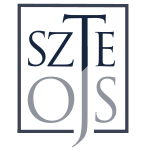The concept ‘half’ in Selkup language
DOI:
https://doi.org/10.14232/sua.2022.56.197-207Keywords:
Selkup, concept, half, lexical representationAbstract
The theoretical frame of this article is the field of cognitive linguistics. The past decades have witnessed a progressive increase in writings on cognitive structures. A special focus is laid thereby on concepts, which are considered as mental organisational units reflecting the external world. With the help of concepts, humans organise their perceptions and experiences in order to be able to understand and act. This paper explores a concrete mental organisational unit – the concept ‘half’ – in Selkup language. In the last decades, some works were published concentrating on concepts in Selkup language and culture, like ‘space’ (Polyakova 2006). {PARAGRAPH} The concept ‘half’ is a fundamental cognitive organisational unit, based on dividing, partitioning and subdividing things, like splitting an apple, a fish or a log of wood, with a knife or an axe in two halves. The examined material consists of four words with the meaning ‘half’, extracted from various dictionaries, and approximately 35 sentences, extracted from two Selkup language corpora, in which these words are used. Due to the semantic connotations and the utilization of the word in certain contexts I propose six conceptual domains (division of things into two halves, transversal/horizontal division of things into two halves, longitudinal division of things into two halves, division of locations into two halves, division of time into two halves and division of paired entities), which are analysed in regard of their lexical representation. The paper has the following structure: after a brief introduction, the material and method are presented. The main section deals with the analysis of the six conceptual domains. At the end of each domain, I will analyse the linguistic representation and the main features of the objects belonging to this sphere. The findings are summarized in the final section. The analysis of the concept ‘half’ in Selkup shows that this mental unit of organisation has a complex structure. Some domains are represented linguistically homogenous (e.g. division of things into two halves and division of paired entities), whereas other domains are expressed linguistically by more than one word (e.g. division of location or time in two halves). Sometimes this incoherent linguistic representation is caused by dialect differences or the fact that all word meaning ‘half’ in Selkup are polysemous and the different meanings might eventually interfere.



